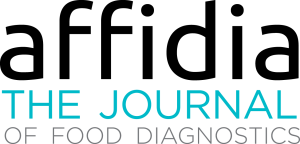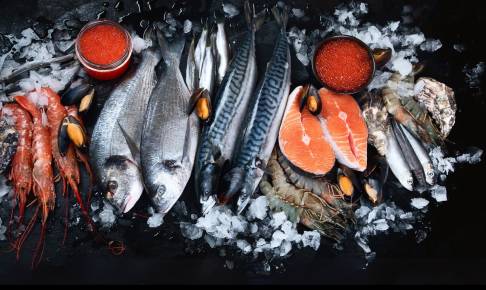The difference between Russian and Codex/EU/Chinese maximum levels for chemical substances in food of animal origin
The list of regulated chemical substances is different, the maxium allowed concentrations are sometimes different and in each country or Federation there are often changes in the regulation. In a few cases such differences can represent a trade barrier.
Abbreviations:Codex • Codex Alimentarius CommissionCU • Customs UnionML • Maximum LevelMRL • Maximum Residue LevelEEU • Eurasian Economic UnionEFSA • European Food Safety AuthorityRosselkhoznadzor • Federal Service for Veterinary andPhytosanitary SurveillanceRospotrednadzor • Federal Service for Surveillance onConsumer Rights Protection and Human Well-BeingSanPiNs • Sanitary Rules and RegulationsTR • Technical Regulation
Food safety surveillance in Russia was born at the turn of 20th centuries. The main activity of food safety inspectors was to prescribe food safety practices for production and trade facilities. Development of the food safety surveillance system took place in the Soviet Era. The Sanitary Inspection Service was founded in 1930s. After World War II, a network of food safety epidemiological stations with laboratories was created. The theory of food hygiene was investigated by research institutions like the USSR Nutrition Institute in Moscow (now the Federal Research Center on Nutrition, Biotechnology and Food Safety). Due to its direct link to medicine, the problem of food safety was given much attention by the State.Beginning in the 1970s, maximum levels (MLs) for food contaminants and veterinary drugs were established in documents called Sanitary Rules and Regulations (SanPiNs).MLs for contaminants in the SanPiNs were science-based and established after detailed risk assessments. After the country had changed its name to the Russian Federation in 1991 and the new period in its history had started, maximum levels for chemical substances from SanPiNs continued to be the basis for corresponding legislation, though they were partially modified.During the Akademie Fresenius conference in Europe several years ago, I spoke with representatives of the EFSA (European Food Safety Authority). Since my professional growth had been steeped in EFSA reports and scientific opinions, I regarded these representatives with reverence, and was a little bit amazed by the respect they had for Russian maximum levels for some contaminants, levels that they said were “strict and providing necessary levels of health protection”. Since 2004, the Federal Service for Surveillance on Consumer Rights Protection and Human Well-Being (Rospotrednadzor), an organization with historically tight connections to medical services, has had the responsibility to establish maximum levels and perform risk assessments for undesired substances in food and feed.In 2010, the Customs Union (CU) was created, and in 2015, the Eurasian Economical Union was established. To date, 5 member countries of the two Unions, including Russia, Belarus, Kazakhstan, Armenia, and the KyrgyzRepublic, have common legislation in some areas, including maximum levels for undesired chemical substances in food and feed, that were established in the Technical Regulations of the Customs Union (CU TR).MLs for veterinary drug residues and contaminants in food products are listed in the following Customs Union and Eurasian Economical Union (EEU) technical regulations (TRs): CU TR 034/2013 “On safety of meat and meat product
Abbreviations:Codex • Codex Alimentarius CommissionCU • Customs UnionML • Maximum LevelMRL • Maximum Residue LevelEEU • Eurasian Economic UnionEFSA • European Food Safety AuthorityRosselkhoznadzor • Federal Service for Veterinary andPhytosanitary SurveillanceRospotrednadzor • Federal Service for Surveillance onConsumer Rights Protection and Human Well-BeingSanPiNs • Sanitary Rules and RegulationsTR • Technical Regulation
Food safety surveillance in Russia was born at the turn of 20th centuries. The main activity of food safety inspectors was to prescribe food safety practices for production and trade facilities. Development of the food safety surveillance system took place in the Soviet Era. The Sanitary Inspection Service was founded in 1930s. After World War II, a network of food safety epidemiological stations with laboratories was created. The theory of food hygiene was investigated by research institutions like the USSR Nutrition Institute in Moscow (now the Federal Research Center on Nutrition, Biotechnology and Food Safety). Due to its direct link to medicine, the problem of food safety was given much attention by the State.Beginning in the 1970s, maximum levels (MLs) for food contaminants and veterinary drugs were established in documents called Sanitary Rules and Regulations (SanPiNs).MLs for contaminants in the SanPiNs were science-based and established after detailed risk assessments. After the country had changed its name to the Russian Federation in 1991 and the new period in its history had started, maximum levels for chemical substances from SanPiNs continued to be the basis for corresponding legislation, though they were partially modified.During the Akademie Fresenius conference in Europe several years ago, I spoke with representatives of the EFSA (European Food Safety Authority). Since my professional growth had been steeped in EFSA reports and scientific opinions, I regarded these representatives with reverence, and was a little bit amazed by the respect they had for Russian maximum levels for some contaminants, levels that they said were “strict and providing necessary levels of health protection”. Since 2004, the Federal Service for Surveillance on Consumer Rights Protection and Human Well-Being (Rospotrednadzor), an organization with historically tight connections to medical services, has had the responsibility to establish maximum levels and perform risk assessments for undesired substances in food and feed.In 2010, the Customs Union (CU) was created, and in 2015, the Eurasian Economical Union was established. To date, 5 member countries of the two Unions, including Russia, Belarus, Kazakhstan, Armenia, and the KyrgyzRepublic, have common legislation in some areas, including maximum levels for undesired chemical substances in food and feed, that were established in the Technical Regulations of the Customs Union (CU TR).MLs for veterinary drug residues and contaminants in food products are listed in the following Customs Union and Eurasian Economical Union (EEU) technical regulations (TRs): CU TR 034/2013 “On safety of meat and meat product
Download content now





















